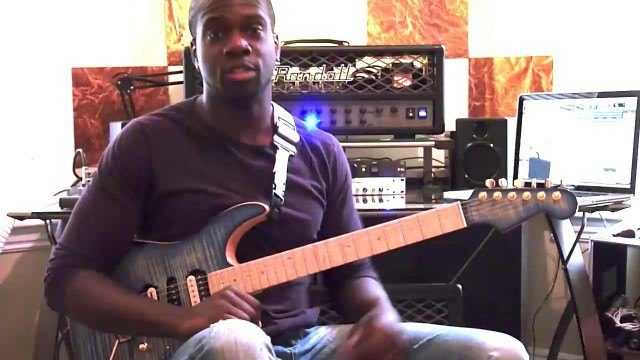Very well then! Let's begin shall we?
The first thing I will tell you is the no.1 commandment of timing practice! ALWAYS STOMP YOUR FOOT TO THE BEAT!
This is extremely important to help in internalizing your feel for various note values. And NO, saying "but. but... I use the metronome?" isn’t going to cut it here Buster! As I stated before, you need to develop a "feel" and "ear" if you may for the various beats and note values. This is best obtained by using your foot. Think of it this way. When you want to practice you ear, and sense of melody, what is the best tool for this? Is it simply listening without playing? Is it playing along to something passively? NO, it's active listening and playing! Singing! When you have a chord or a scale, and sing along to the lines you play, you not only force yourself to play vocally manageable phrases. No, something will also happen inside your head. When you hear a chord, and at the same time sing a note you play over that chord, you will get a MUCH stronger sense of how that note relates to the harmony. You will physically "feel" tension notes and chords notes. Same thing with stomping your foot. You will enable your body to "feel" the note values and rhythms you play in correlation to the beat stomped out by your foot. This is the way to go!
We'll start off with example no.1a. In this example I have taken 3 notes, in a chromatic type pattern. The notes are not really important here, note values are! I have begun by playing these notes through all the major note values we will be using. Remember, each note value also corresponds to a pause value. These are equally important to learn, since what you don’t play is every bit as important as what you do play. Here’s the example:

Then of course, you really need to be able to play any idea or line, in any note value, at any time, and in any order. With that said, here is example 1.b. What I’ve done here is that I’ve arranged the note values more randomly, since you need to be able to switch between them in all directions. So don’t practice this as lines or licks. The MOST IMPORTANT THING to remember is that EVERYTHING in this tutorial must be seen conceptually, and be applied. And by that I mean that you must take each and every one of the examples in here, play them as is, and then take ANY idea or lick or line you know, and do the same thing with them. If you won’t, then stop reading right now! Because if you don’t, this will just be another series of licks you learn, and never be able to apply.

Remember! If you do not learn to think conceptually, you will not think artistically. And then you will be nothing more than a parrot repeating its master’s words, or a copy machine spitting out better or worse copies of something that is already done. You want to be an artist, creating your own works of art when you play, not just repeating someone else’s. As with any artist, learning by copying is a key for acquiring the tools needed to free your own artistic abilities. However, it is not until you learn to use all those tools conceptually and apply them, that you can create your own style.
Enough ranting about that though, you got the idea right? =) Then turn the page for examples 2a-c!





























